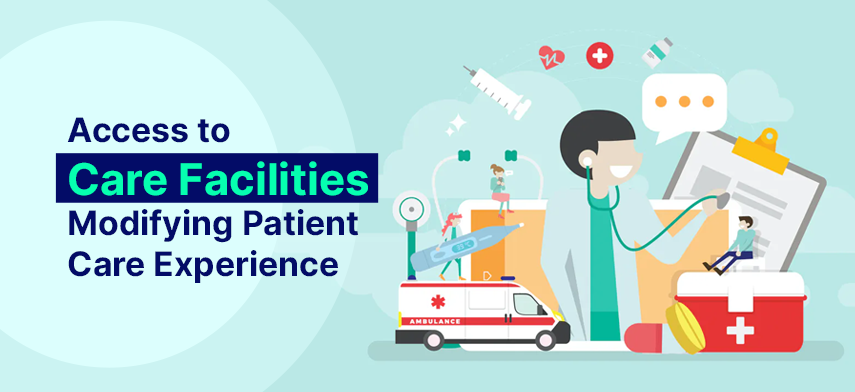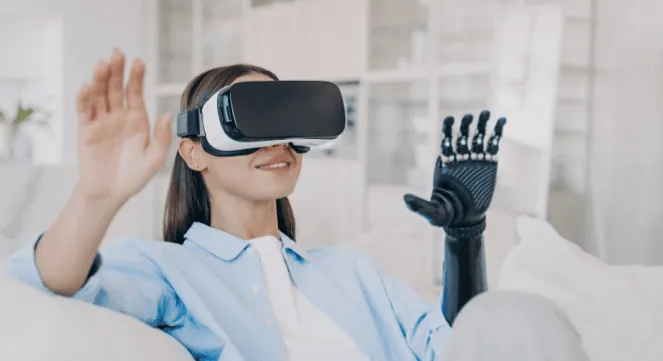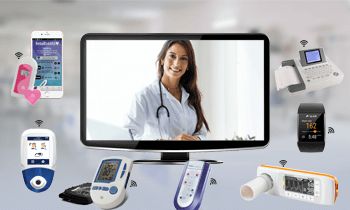COVID-19 has been a challenging phase for medical institutions, but the treatment cannot be denied. For improving the patient care experience, telehealth was one of the essential and welcoming changes embraced by healthcare. The pandemic brought a paradigm shift in rendering medical amenities through telehealth.

In order to access healthcare amenities safely yet seeking the best solution, telehealth and virtual health care were scaled up for improving patient experience in the post-pandemic phase. Hence, the critically flexible, innovative, and seamless framework of healthcare was promoted.
Steps Born Out of the Pandemic to Enhance Patient Care Experience
During the early stages of the pandemic, people were confined to home. The innovation in healthcare and easy accessibility to services, namely, telemedicine, started delivering timely assistance to the patients. Not only did it become a tool to revolutionize healthcare, but it eventually became an opportunity for the national health systems to improve the patient experience. Some noteworthy steps that were adopted in order to enhance the experience of existing and new patients:
1 Communication as the prime focus for practical telehealth experience
With the rise in the number of people using telehealth services, the authorities need to keep communication clear. In simple words, Keeping conversations lined up was one of the strategies of healthcare institutes with front-line caregivers to address their level of anxiety. Reaching out to patients in remote locations and making every medical amenity readily available were some of the factors assessed in the modern patient care system. It further enabled the doctors to contribute to improved patient care experience.
2 Care access and coordination
The healthcare officials made it a point to help patients understand the process of teleconsultation and its implementation. Moreover, the patient care technology was simplified by coordination and reaching out to people who could not access care treatment delivery.
3 Emphasizing the teamwork of healthcare professionals
It takes teamwork, collective effort, and a smooth hierarchy of healthcare to deliver the best treatment and other medical services. The pandemic warriors, including the team of doctors, have coordinated with patients while following medical protocols of sanitation to line-up consultations and different conversations to spread awareness about mobile hospitals, telephonic coordination with the healthcare volunteers to seek assistance in guiding the patient in getting started with the treatment.
4 Develop patient monitoring protocols for healthcare personnel
Like every industry, even healthcare has some protocols to be followed regularly. In the era where new normalcy has been created due to the pandemic and its repercussions, the officials are trained to identify the symptoms of the virus, how to stay safe, and keep sanitization as the chief measures for keeping patient experience management intact. This awareness and self-assessment help healthcare officials impart information about safety protocols to the patients most of the time.
Besides, the penetration of automation in the healthcare sector might be attaining the pace steadily, yet, the patient care technology and trends in the US contribute to the growth of the healthcare industry. The optimal use of IT and new technological trends in the medical field indicate the growth in the levels of automation for efficient patient care management.
Progress of Telehealth/Telemedicine Services in 2021
A broad perspective of healthcare information management is highlighted when telehealth’s impact has to be assessed. The best therapists, practitioners, and doctors can be contacted based on their efficiency as well as proficiency.
In the digital world, it is easier to access healthcare data without any hassle. The directory of doctors, hospitals, and other healthcare providers is readily available across all digital healthcare platforms. The prevalence of healthcare data management makes all the details about the nearby, prominent clinics, hospitals, and doctors seek teleconsultation without stepping out. A few points that have emerged and contributed to the growth of telehealth/telemedicine platforms enhancing patient care services include:
1 Improved access to specialists
Flexibility in contracting specialists from remote locations has been achieved through smartphone users to book telehealth consultations. It was a remarkable achievement of redefining the patient care experience. Moreover, the specialists were able to reach more zip codes than estimated. This resulted in utilizing healthcare information management wisely to provide satisfactory amenities to the patients.
2 Minimizing hospital admissions and re-admissions
The telehealth initiative is intended to make the patient care experience better while adding a proactive approach to attain the outcome. The whole idea was to manage COVID-19 patients and ensure inpatient bed capacity, emergency departments, and other healthcare facilities without any discrepancy. It was noticed that nearly 18,000 patients were treated in the virtual hospital, with only 3% requiring transfer to a brick-and-mortar site.
3 Enhanced healthcare services delivery outcomes
There have been many serious health issues and other complications as a result of the widespread pandemic. Telehealth has made the outcome definite and enhanced the prospects to deliver speedy results. There were no constraints like missing the appointment or accessing the healthcare services due to location. The remote culture of providing medical facilities has made chronic care management smooth and fast as compared to the pre-COVID times.
4 24/7 healthcare information management
Unlike doctors and specialists’ traditional fixed working hours, the 24/7 patient care technology during the pandemic is being worked over. It further ensures that individuals from all parts of the US can avail virtual healthcare facilities anywhere and at any given time.
5 Virtual care platforms increasing patient care accessibility
The business models in the virtual healthcare plans came into existence and ensured maximum convenient accessibility to the patients. By enabling longitudinal virtual care, telehealth-supported health solutions and in-person care models, and better initiatives of patient experience management and affordable services were critical changes reflected in the healthcare industry as an after-effect of the pandemic.
6 Expanded use of telehealth enabling regulatory changes
The use of telehealth was promoted by the healthcare industry, and it turned out to be a permanent add-on for a simplified and improved patient experience. For instance, the reimbursable telehealth codes concerning physician fees acted as the binding segment of healthcare information management.
In terms of healthcare in the post-COVID-19 period, telehealth is certainly considered the next revolutionary change across the health and healthcare sectors. Be it the process of booking appointments online, discussing the issues with the physician through telecommunication, or understanding the dynamics of virtual patient experience management, new practices for availing medical assistance, people have moved towards advanced systems for remote healthcare solutions.

Improving Patient Care Services
The pandemic conditions are assuring different and unique ways for people to access medical amenities conveniently throughout the world. Let’s have a look at how digital health solutions contribute to scaling up of healthcare services:
1 Promotion of well-informed diagnoses
Keeping positive scope as a part of healthcare services management is the prime goal of every institute. Making a well-informed diagnosis while troubleshooting the challenges has been the common change in the current healthcare system. Human errors and data misinterpretation are thereby resolved through promoting well-informed diagnosis.
2 Identifying and addressing healthcare services flaws
As mentioned previously, data, strategy, or system-related errors are being monitored regularly. The issues are addressed to avoid any complications in the patient’s treatment.
3 Recording real-time information for healthcare follow-ups
Many teleconsultations need to be followed up. Therefore, real-time healthcare data management is being emphasized for smooth workflow for telehealth and telemedicine operations.
4 Keeping clinicians safe and protected
Clinicians and everyone associated with healthcare institutes need to stay safe while serving patients. Thus, the working conditions of hospitals are being monitored effectively.
Through healthcare information management, EHR integration, and accommodating HIPAA compliance, digital healthcare services can improve patient care experience on a higher scale. It is important to note that patient care technology will keep evolving in the coming decade, emphasizing on human-centric approach to telehealth and telemedicine models of healthcare.
Bottomline,
Based on the above discussion, offering transparent and speedy healthcare outcomes while improving patient care experience and technology is constantly worked over by the industry. The modernization of the health and healthcare sector due to the present crisis promises high-quality and safe telehealth services to patients. Consumer expectations, outcomes, well-informed and strategic plans for diagnosis create efficient virtual care solutions in the entire process. Therefore, by leveraging access to patient care technology, the health and healthcare industry can scale its businesses at a higher position, while still maintaining a stronghold on the global market.

Author's Bio

Shailendra Sinhasane (Shail) is the co-founder and CEO of Mobisoft Infotech. He has been focused on cloud solutions, mobile strategy, cross-platform development, IoT innovations and advising healthcare startups in building scalable products.









